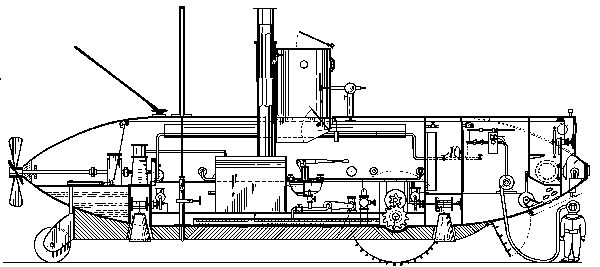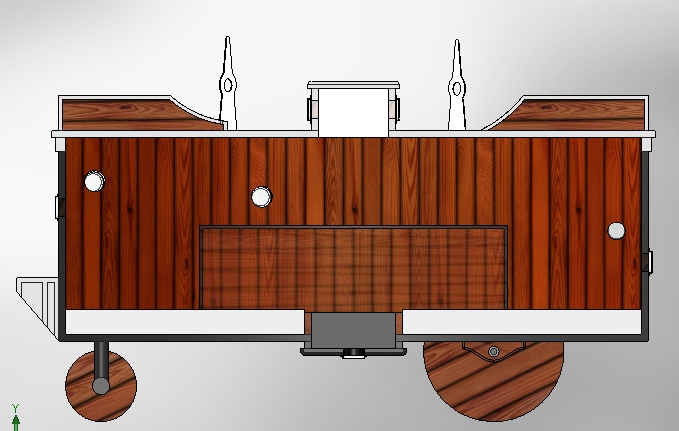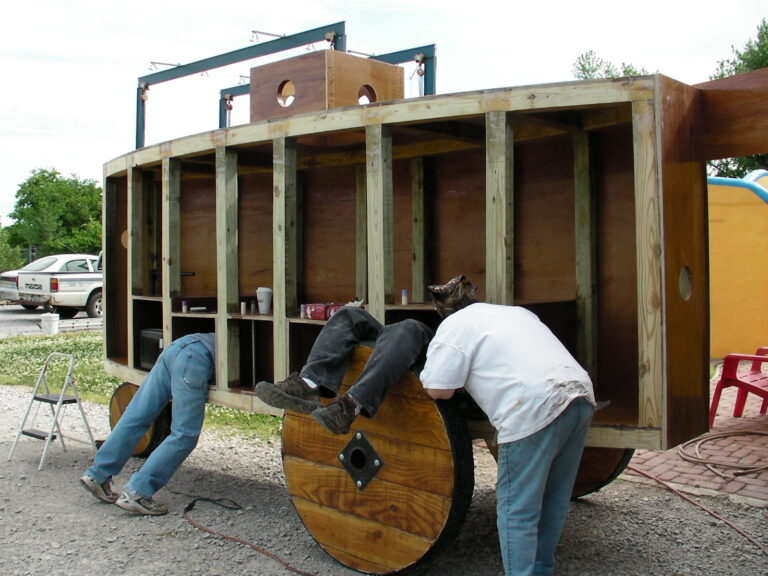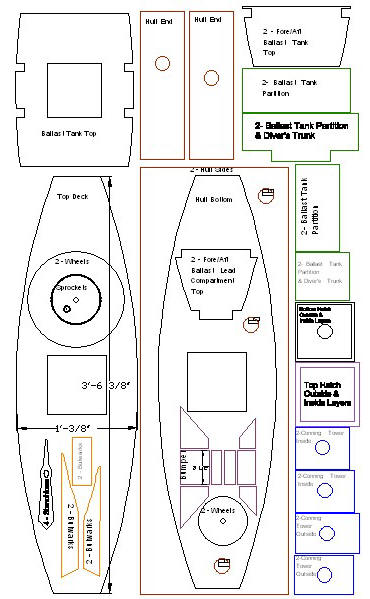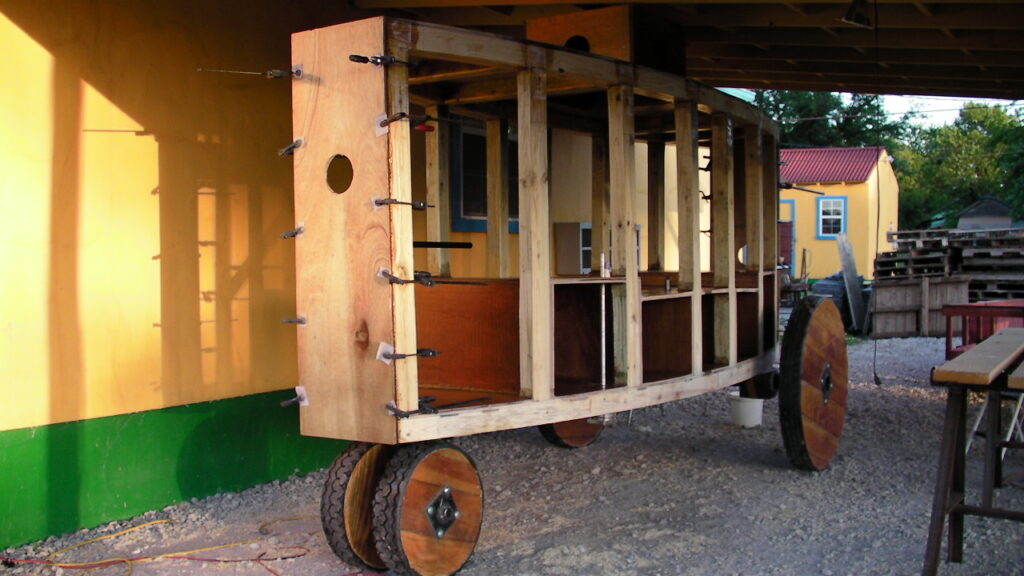
Vertical Framing
Framing of the wood beams that made up the skeleton of Argonaut Jr 2010 was with 4 by 4 inch Douglas Fir without any knots (that would weaken it). At $4.50 a foot it wasn’t cheap but it made the hull much stronger than the pine board Simon Lake used on the real Argonaut Jr.
Wood
2 – 1 x 4 x 16′ – Top deck trim
55 – 1 x 4 x 8′ – Top and bottom laminated beams and fore and aft trim
18 – 4 x 4 x 6′ Fir – Vertical and cabin top frames and axel blocking
25 – 2 x 8 x 8′ – (18, 4 wheels, 6/layer – 2 lg 2 sm – 3/layers) + (2, stanchions) + ( 5 bulwarks & bumpers)
70 – 4 x 8′ x 1/4″ Luan plywood – (24 sides, 8/layer, 3 layers) + (32, 3-decks, 3/layer, 4 layers)
+ (14, hatches, conning tower, tanks, – 3.5/layer, 4 layers )
Steel
In the 1890’s steel superseded iron as the construction material, but rivets and bolts were still the most common fasteners. Welding was invented in 1890, but it would not be widely available unit the early 1900’s
Lip Seals 2 – 5/8″, 4 – 1″, 2 – 1 1/2″
Lead
10,140 Lbs
Plastic
1 – 4 x 8′ x 3/4″ Clear acrylic sheet — portals and ballast tank inspections ports
3′ x 3 1/4″ UHMD rod – axel, tiller, and through hull load bushings
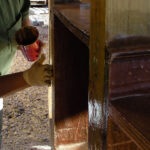
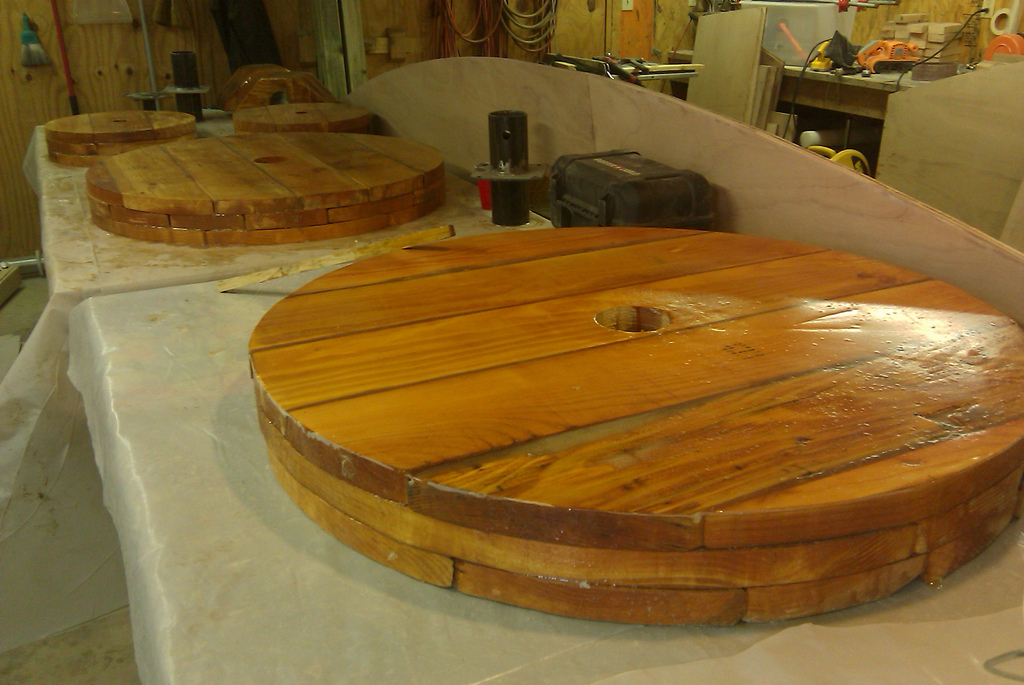
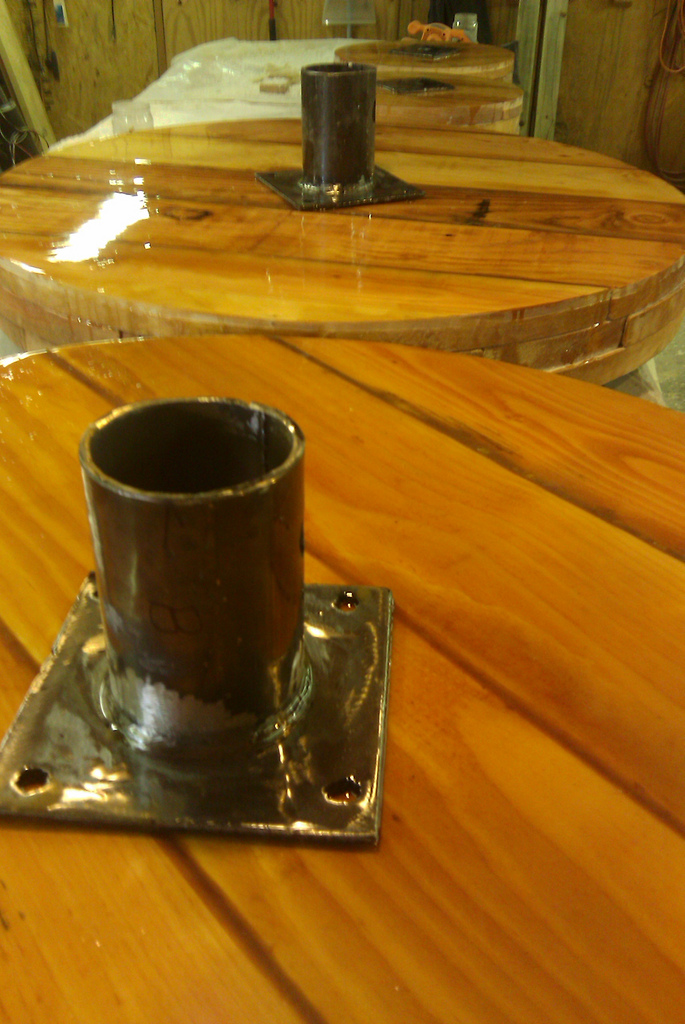
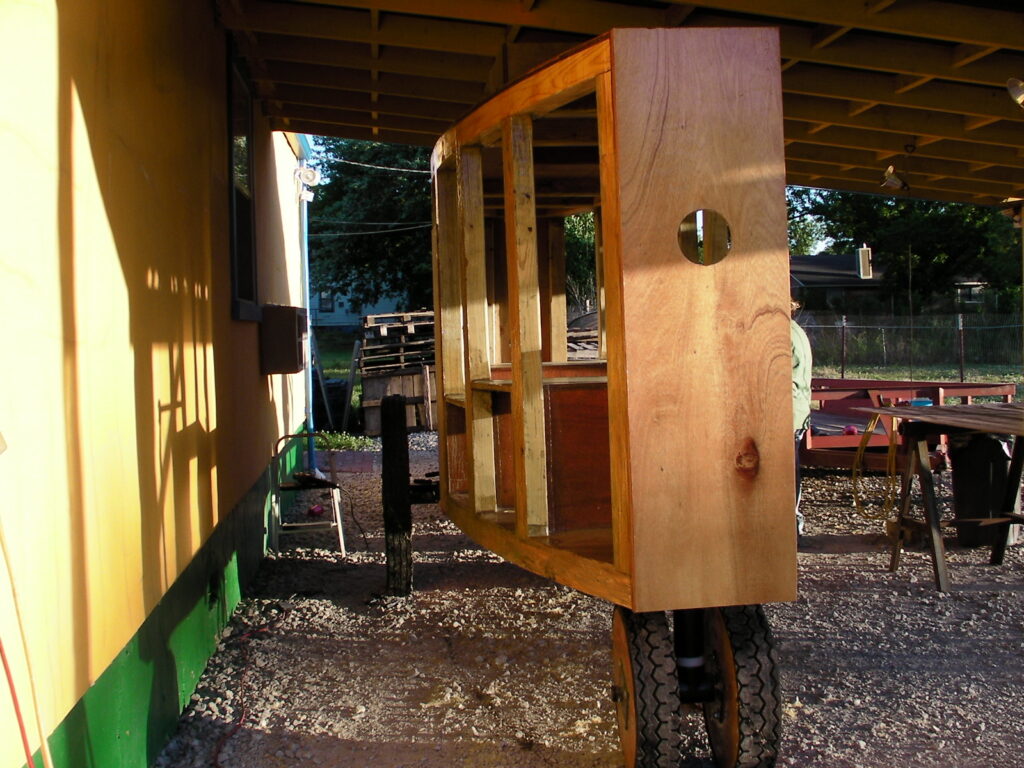
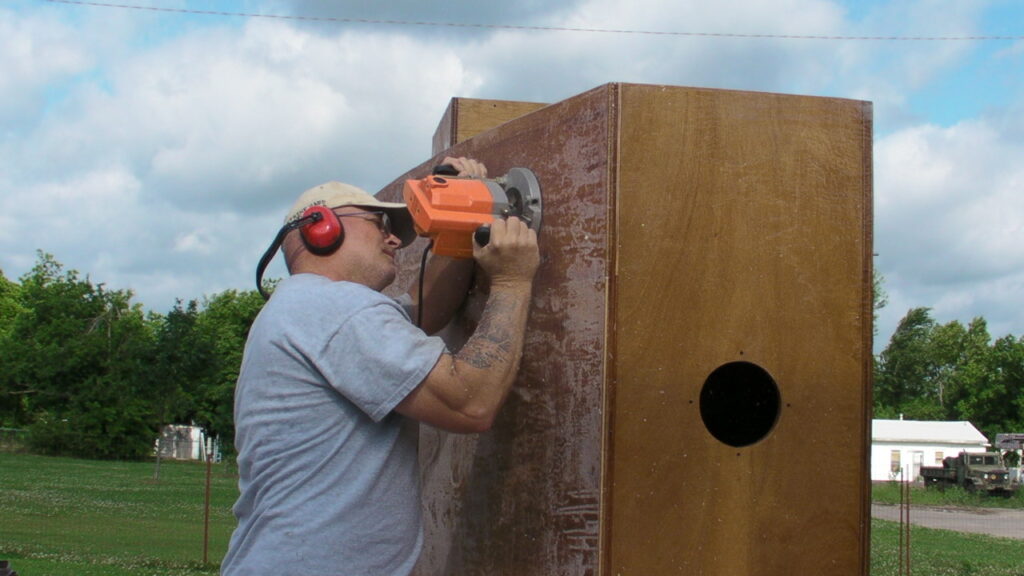
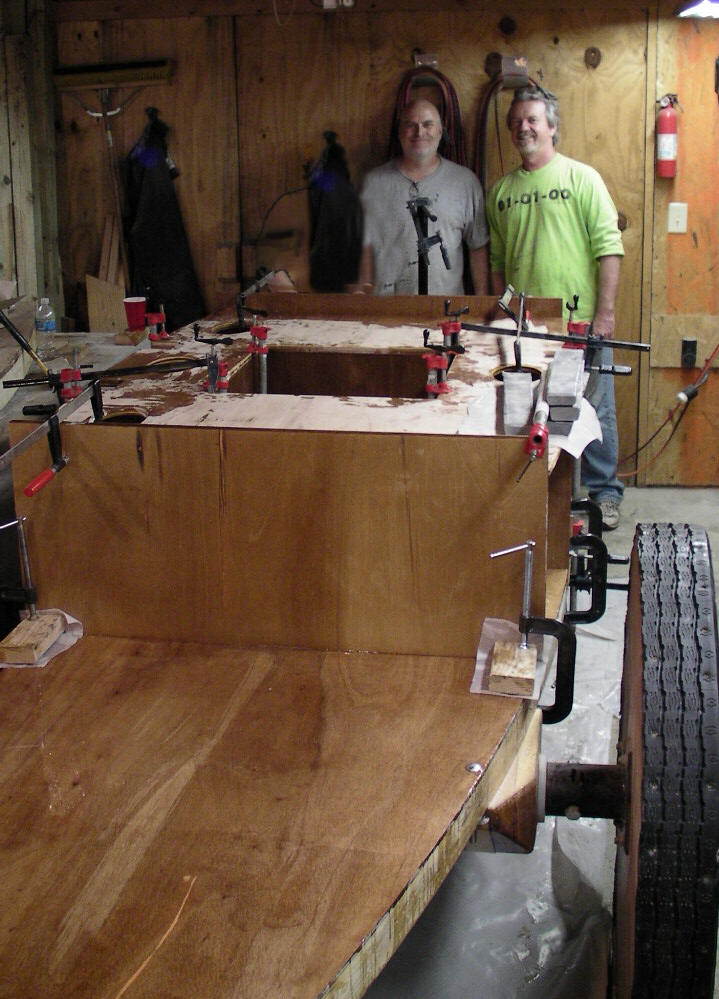
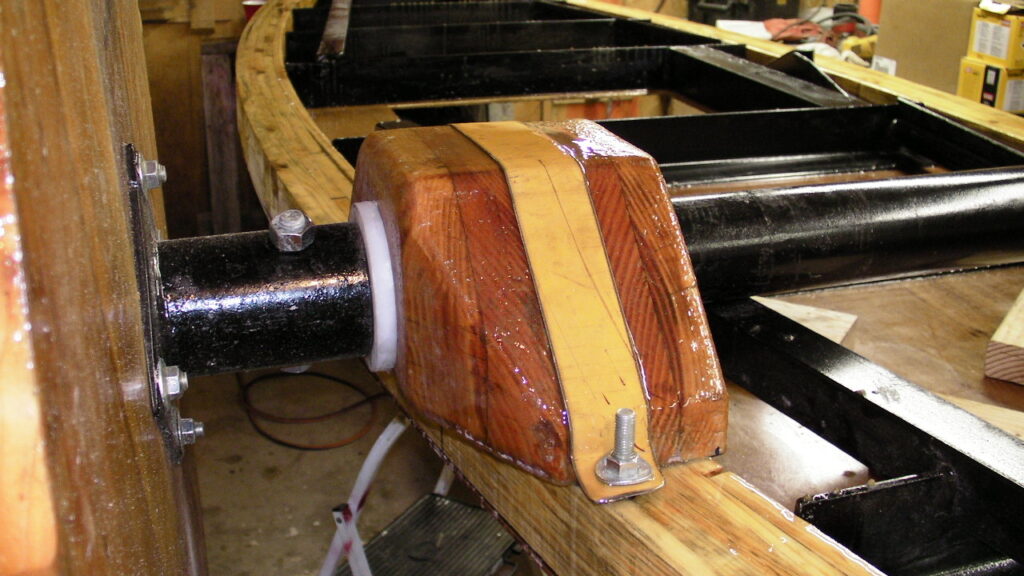
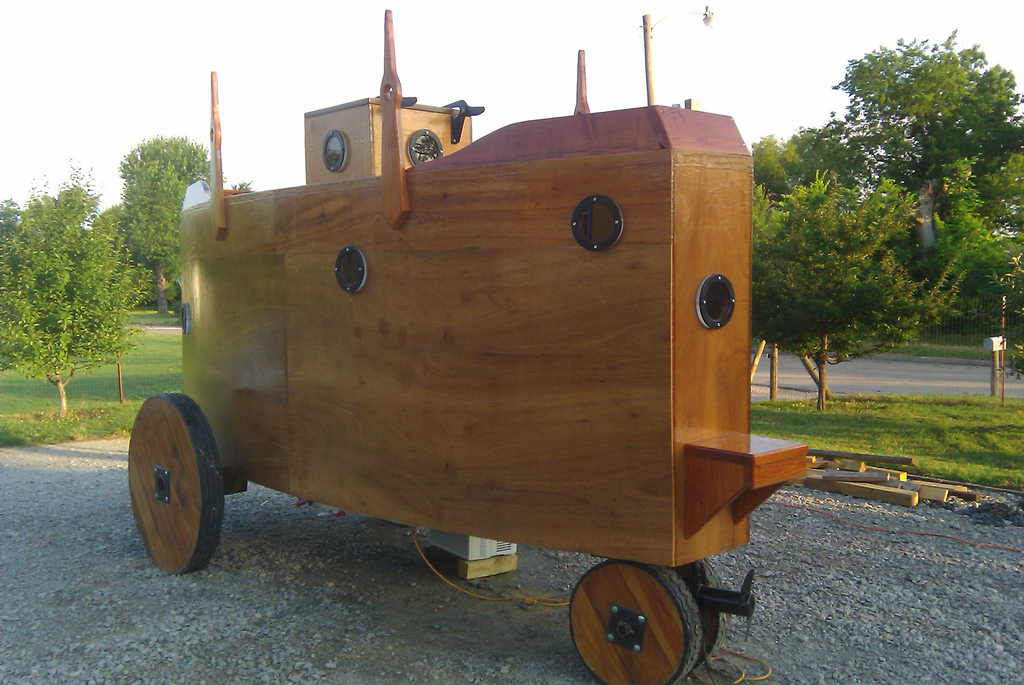
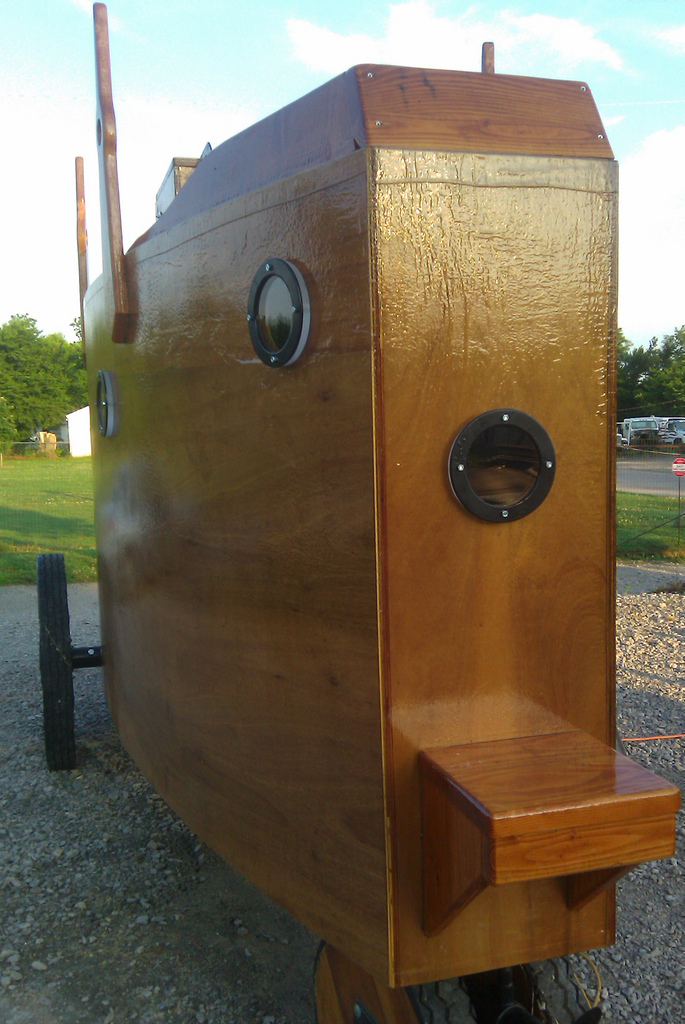
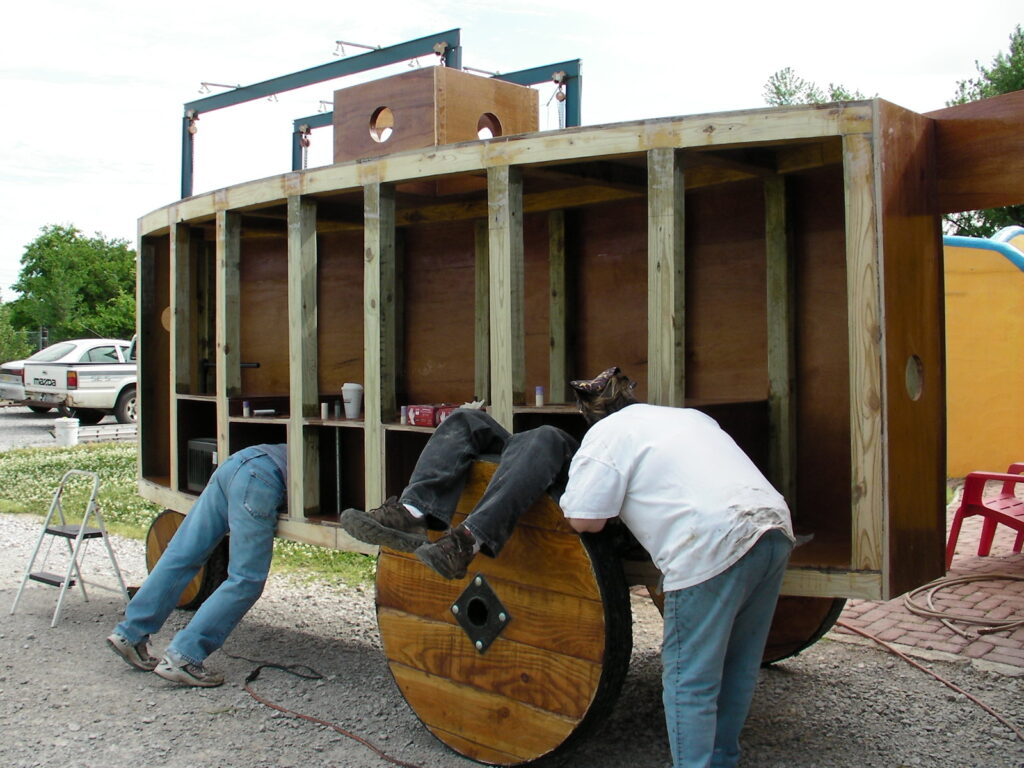
Resources
Want to know more about plywood? Here is a good article: www.boulterplywood.com/sailmag.boatworks.html
How to Scarf Plywood for joining sheets together. http://www.boatbuilder.org/godzilliscarfing.htm
Scarfing Jig: http://www.oneoceankayaks.com/stitchglue/plyshophtm/scarfjig2.htm
